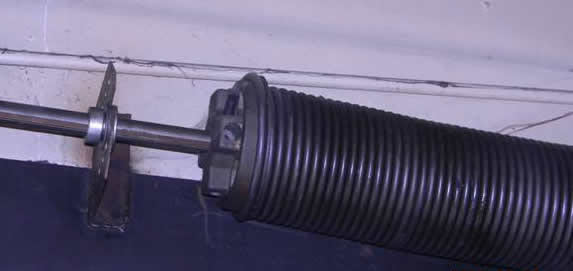Stored energy is accumulated energy, which can release suddenly, potentially causing serious injury or death. Stored energy has many forms, including pressurized gases and liquids, stored mechanical energy, stored electrical energy, and gravitational potential energy. Stored energy is particularly dangerous because the hazard still exists when the original source of energy is removed. This issue of Clues will explain the various forms of hazardous stored energy, how these energies can cause damage or injuries, and how to prevent stored energy accidents.
When Stored Energy is Unintentionally Released
"On January 17, 2006, a 52-year-old millwright (the victim) was fatally injured when he was pinned between the feed rolls of a debarker as he was welding additional metal to the teeth on the feed rolls. The victim had locked out two electrical disconnects in the debarking room before beginning his work, but he had not locked out all electrical disconnects and had not shut off and locked out the air line to the machine. As the victim welded, he leaned forward and placed his head between the upper and lower feed rolls to reach areas that required more metal. The air pressure on the rolls automatically cycled and the feed rolls closed over the victim's head." (NIOSH In-house FACE Report 2006-02; http://www.cdc.gov/niosh/face/in-house/full200602.html)
Pressurized Gas Stored Energy
Gases such as air, carbon dioxide, nitrogen, are compressible. In a closed vessel, a gas that is pressurized will remain pressurized until it is released, or used as a source of energy to power a machine. Compressed air is often used in factories to power equipment. If maintenance is attempted on a pressurized line without isolating the line and relieving the pressure, the sudden release of the pressure can propel fittings or rupture lines or vessels. Buses and tractor-trailers typically have a split rim wheel that can explode if pressure is not relieved in the tire before disassembly.
Mechanical Stored Energy
Stored mechanical energy occurs in springs. Some springs do not store energy, instead acting as shock absorbers such as springs in bed frames, or are used in force measuring devices like bathroom scales. Small springs that store energy are harmless such as springs used in writing pens, or latches on suitcases. Larger springs can hold tremendous energy with the potential for serious injury. Springs used on shock absorbers for vehicles hold large amounts of energy, and some power presses have components held under extreme pressure from springs. Overhead doors also use large springs with large amounts of stored energy.

Figure 1: Overhead door springs are a dangerous source of stored energy
Flywheels are another source of stored mechanical energy. Anything with elasticity can hold stored mechanical energy and can act as a spring. Trees that have been partially downed by other trees are an example. This energy can release violently when the tree that is loaded is cut. Steel in brake presses or other forming machinery can store energy that can suddenly release, until the yield point has been reached in the material.
Gravitational Stored Energy
Gravitational stored energy occurs due to the gravitational forces acting on all objects. This potential energy only becomes hazardous if the object becomes unsupported, or released from an elevated position. A dump truck with its bed in the elevated position, a car being raised by jacks, a jet flying through the air, a raised garage door, and a raised scissor lift all have large amounts of potential energy acting on them. The amount of energy depends on the height of the object above the ground or floor surface, and the mass of the object.
Hydraulic Stored Energy
Hydraulic stored energy occurs when a liquid is pressurized and contained within a vessel. The liquid can be water, oil, or other fluid. While liquids themselves have a very limited ability to be compressed, pressure is created by flow from pumps and resistance to this flow, by a compressed gas, or due to gravitational potential energy such as the pressure that is experienced the deeper one dives in an ocean or body of water. An example of stored hydraulic energy that could present a hazard of injury is a pressurized hydraulic reservoir. Removal of a hose or fitting without removing the source of pressure, and relieving the pressure, can result in a violent release of the hydraulic energy which would propel the fitting or hose at a high velocity.
Electricity
Electrical energy can be stored in batteries and capacitors. Contact with this electrical energy can be extremely hazardous.
Potential Energy and Safety
Stored energy must be managed carefully or serious injury or death can occur. Many of the accidents we investigate involve some sort of potential energy. There is always a way to safely control stored energy. Manufacturers are responsible for building safe ways to release hazardous energy in the products or machinery that they build. Many accidents involving hazardous energy occur during maintenance procedures. While not all maintenance procedures can be made 100% safe, manufacturers who have the foresight to anticipate maintenance that will occur on their products can design safe methods of releasing or preventing the release of this energy.
Standards?
OSHA has strict guidelines on isolating energy sources, and releasing any stored energy for maintenance procedures. But only employers are subject to OSHA. Industry standards apply to manufacturers, but are typically voluntary, unless mandated by OSHA. Some industry standards address preventing stored energy in machine design, or providing methods of safely isolating and releasing stored energy. But standards covering many machines and products do not address stored energy hazards, which leaves it completely up to the manufacturer, and the knowledge of the designers to design safety into their products or machines.
How We Can Help
At MASE, we can determine if an accident involving stored energy could have been prevented. Call us at (855) 627-6273 or email us at johnlryan1@gmail.com to discuss your stored energy accident case.










